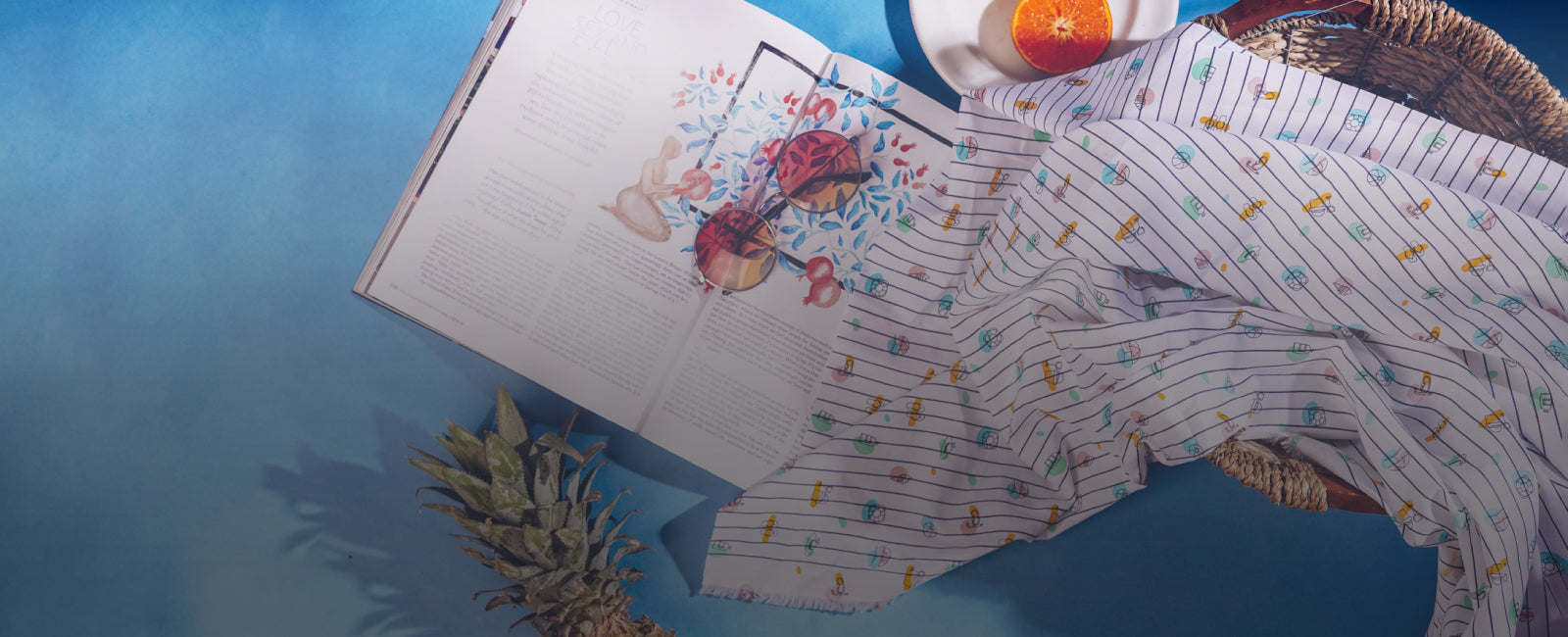When it comes to native fashion of India, Rajasthan is one of most influential foundry of inspiration for all modern day designers.
So much of modern day Indian ethnic design traces its roots in Rajasthan, yet not many are aware of its other art forms that continue to put their subtle imprint across modern casual cloth applications.
History Of Indigo

The Blue Gold as often referred during British Raj, Indigo cultivation for trade has its history dating back to 17th century when entire Europe was smitten by this ethereal shade. By the advent of 18th century, 95% of Indigo exported in Britain was coming from savaging atrocities inflicted upon peasants in India who were mercilessly bullied to cultivate Indigo plant leaving the mass of rich farmland land sterile.
During those times it was difficult for people to produce indigo however the European market has made prospered with the dark glare of midnight hour that they named it indikon.
Bagru was the dominant centre for producing indigo. Such intriguing properties of indigo were recognized by numerous cultures across the globe wherein the primitive craft has been evolved into a highly cultured language which persists till now.
Over centuries, the demand inspired chemical companies to figure better processes of Indigo production while the niche charm of Indigo Print art continues to enrich lives of artisans of this craft.
Indigo - The Jewel Of The Blue Gold
1. Dye Information

One of the most crucial aspect in the formation of the indigo fabric is to create an ink in which wooden blocks can be dipped. This involves creating a formula that turns all the patterns white when dipped in Indigo. Bran from Wheat, Gond (Edible gum) from trees, Limestone and clay are first mixed impeccably and then sieved to the minutest bits. This creates a slurry for printing.
2. Hand Block Printing

3. Blue Dye

This traditional art has been an indispensable part of the Bagru community. Men, women, children all dedicate their entire lives making Indigo prints. It’s not just a profession to earn money, it’s the sum total of their life, day in and out.
Indigo in Modern Times

Through the biological route, indigo will become one of the most high-magnitude chemical dyes. With its conspicuous color it has become the most desirable among people, isn’t it?
The people of India were among the pioneers behind the art of printing and dyeing. This great method of dyeing with indigo is still a mystery for people outside India. To solve this mystery they have traveled and affirmed that they observed no color when exposed to sunlight after soaking it in indigo. Such peculiar art is still praised by many craftsmen and artists.
We at Fabriclore find ourselves getting more of these every day and just can’t stop growing our widest range of Indigo prints. What more ! we have armed away from Bagru and can relentlessly fulfil your Indigo appetite. So whatever your sartorial senses are craving for, Indigo is the ingredient you should be looking for right here for the Indigo collection.
We also happen to be a magnet for suggestions, and would love to catch yours….throw us yours on hello@fabriclore.com.




